Butternut squash, a popular winter squash variety, is loved for its sweet, nutty flavor and versatile culinary uses. Traditionally grown in garden beds, butternut squash can also thrive in plastic containers, making it possible for gardeners with limited space to enjoy a bountiful harvest. With the right techniques, you can grow high-yield butternut squash in containers and even have fresh squash available to enjoy year-round. This guide will walk you through every step, from selecting the right container to harvesting and storing your squash.
Why Grow Butternut Squash at Home?
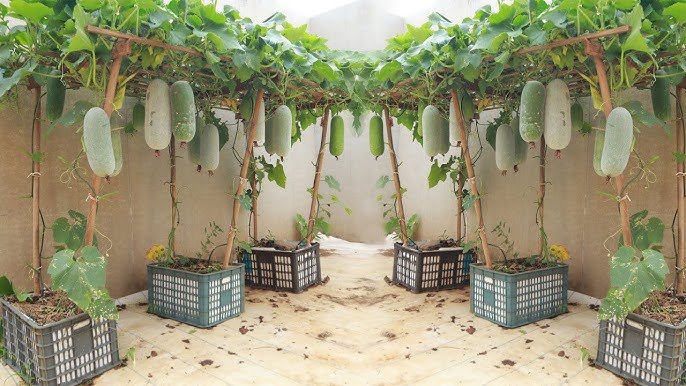
Growing butternut squash at home offers multiple benefits:
- Freshness and Flavor: Home-grown squash is fresher and tastier than store-bought alternatives.
- Nutritional Value: Butternut squash is rich in vitamins A and C, potassium, fiber, and antioxidants.
- Cost-Effective: Growing your own squash reduces grocery bills, especially for families who consume squash regularly.
- Control Over Chemicals: By growing at home, you control fertilizers and pesticides, ensuring healthy, chemical-free produce.
- Sustainability: Container gardening reduces reliance on commercial agriculture and encourages eco-friendly practices.
Why Use Plastic Containers for Butternut Squash?
Plastic containers are a practical solution for growing squash, especially in urban or small-space gardens:
- Space-Saving: Perfect for balconies, terraces, or patios.
- Portable: Containers can be moved to optimize sunlight exposure or protect plants from adverse weather.
- Durable: Plastic containers last for multiple growing seasons.
- Water Retention: Plastic retains moisture longer than clay pots, which benefits butternut squash plants.
- Eco-Friendly: Repurposing plastic containers reduces waste and promotes sustainable gardening.
Choosing the Right Butternut Squash Variety
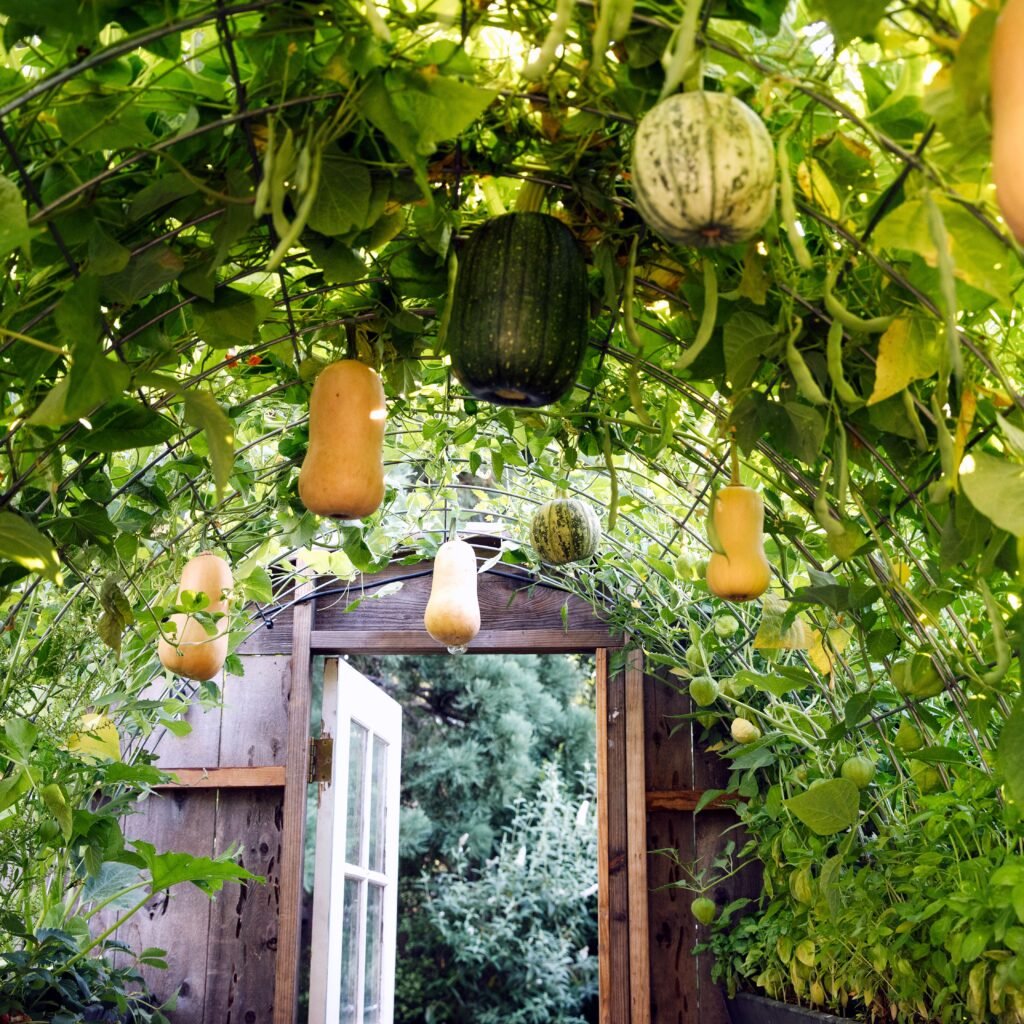
For container gardening, bush or compact varieties of butternut squash are ideal. While vining types can grow in containers, they require trellises or additional support to prevent sprawling.
Recommended Varieties for Containers:
- Bush Butternut Squash: Compact, ideal for container growth, and produces a high yield.
- Butterbush: Small, bush-type plant perfect for limited spaces.
- Tromboncino (Optional for Vertical Growth): Requires trellis support but produces long, abundant fruits.
Choosing the right variety ensures manageable growth, higher fruit yield, and easier maintenance in containers.
Selecting the Right Plastic Container

Butternut squash requires deep, spacious containers to accommodate its root system:
- Size: Choose containers at least 15–20 inches deep and 18–24 inches wide. Large containers support vigorous growth and heavier fruit production.
- Drainage: Ensure containers have multiple drainage holes at the bottom to prevent waterlogging and root rot.
- Durability: Use sturdy containers that can withstand outdoor conditions.
Pro Tip: Reuse large plastic barrels or storage bins as squash containers after cleaning and drilling drainage holes.
Preparing the Soil
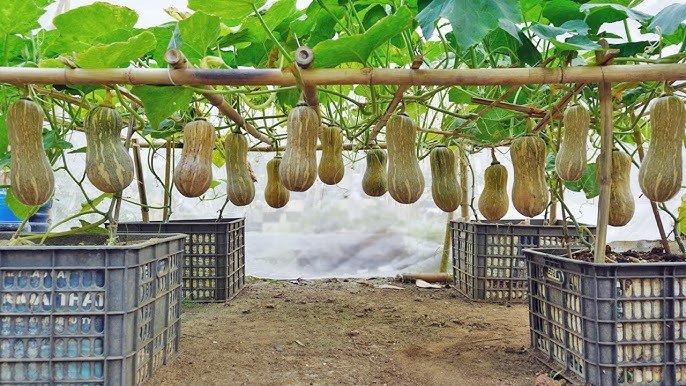
Butternut squash is a heavy feeder and thrives in nutrient-rich, well-draining soil. A proper soil mix is key to high yields:
- 2 parts garden soil
- 1 part compost or organic manure
- 1 part perlite or coco peat for aeration and water retention
Mix thoroughly to ensure good soil structure. The soil pH should ideally be between 6.0 and 7.0.
Tip: Adding a handful of bone meal or rock phosphate at planting time can promote strong root development and flowering.
Planting Butternut Squash Seeds or Seedlings
You can grow butternut squash from seeds or seedlings:
- Seeds: Sow 2–3 seeds per container, 1 inch deep. Thin to the strongest seedling after germination.
- Seedlings: Transplant seedlings into the container, burying up to the first set of leaves for stronger root growth.
Spacing: Even in containers, give each plant enough space to grow without crowding, ensuring better airflow and reducing disease risk.
Pro Tip: Soak seeds overnight before planting to speed up germination and improve seedling vigor.
Watering Techniques
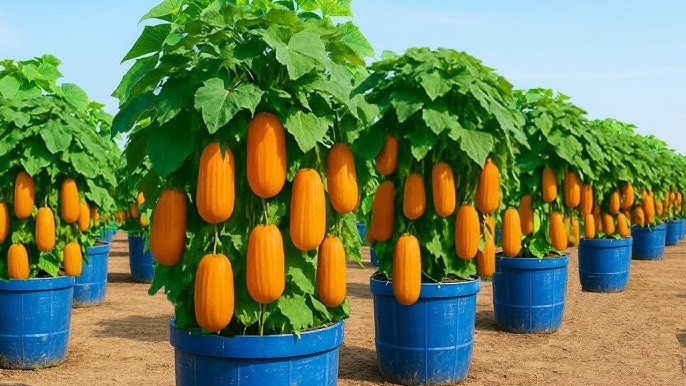
Consistent moisture is critical for squash growth and fruiting:
- Water deeply 2–3 times per week depending on weather and container size.
- Avoid wetting the leaves to prevent fungal infections; water at the base of the plant.
- Mulch the soil surface with straw, dried leaves, or coco peat to retain moisture and regulate soil temperature.
Tip: Self-watering containers can reduce the frequency of watering while ensuring consistent moisture for squash roots.
Fertilization for High Yield
Butternut squash requires regular feeding to support rapid growth and heavy fruiting:
- Organic Fertilizers: Use compost, vermicompost, or liquid manure every 2–3 weeks.
- Balanced NPK Fertilizer: Apply a balanced fertilizer during vegetative growth for strong leaves and stems.
- Flowering and Fruiting Boost: High phosphorus and potassium fertilizers support flower development and fruit set.
Proper fertilization ensures healthy plants capable of producing a high number of fruits per container.
Supporting Your Butternut Squash Plants
Butternut squash plants can be sprawling, so providing support is crucial, especially for container-grown plants:
- Trellis or Stakes: Train vines to grow vertically to save space and prevent fruits from touching the ground.
- Cages: Tomato cages can also support squash vines and protect fruits from soil-borne diseases.
- Guiding Vines: Regularly guide and tie vines to the support structure gently to prevent breakage.
Proper support improves air circulation, reduces disease risk, and keeps fruits clean and healthy.
Pest and Disease Management
Even in containers, squash can face pest and disease challenges:
- Common Pests: Squash bugs, aphids, spider mites, and cucumber beetles.
- Organic Controls: Neem oil spray, insecticidal soap, or introducing beneficial insects like ladybugs.
- Disease Prevention: Ensure proper spacing, sunlight, and air circulation. Remove infected leaves promptly.
Healthy plants are more productive, producing more flowers and fruits for year-round harvesting.
Pruning and Maintenance
Pruning butternut squash can improve yields and fruit quality:
- Remove yellowing or diseased leaves.
- Trim side shoots for bush-type varieties to focus energy on main stems.
- For vining types, prune overly long vines to manage space and encourage fruiting.
Pruning directs the plant’s energy to producing larger, healthier fruits.
Harvesting Butternut Squash
Butternut squash typically matures in 80–120 days depending on the variety:
- Fruits are ready when the skin is hard, matte, and the color is deep beige.
- Use a sharp knife or scissors to cut the fruit from the vine, leaving a small stem attached.
- Avoid harvesting immature fruits; they will not store well and may reduce the plant’s overall productivity.
Pro Tip: Harvest regularly to encourage continuous flowering and fruiting throughout the growing season.
Storing Butternut Squash for Year-Round Use
One of the great benefits of butternut squash is its long shelf life:
- Store in a cool, dry place with good ventilation.
- Properly cured squash can last 2–3 months or even longer.
- Avoid stacking fruits directly on each other to prevent bruising and rotting.
By storing squash properly, you can enjoy a year-round supply of fresh, home-grown squash.
Tips for Maximizing Yield in Containers
- Choose Compact Varieties: Bush-type squash is ideal for container gardening.
- Use Large Containers: More root space = higher fruit yield.
- Sunlight: Provide at least 6–8 hours of direct sunlight daily.
- Regular Monitoring: Check plants for pests, diseases, and nutrient deficiencies.
- Companion Planting: Marigolds and basil can deter pests naturally.
- Vertical Growth: Trellises maximize space and improve fruit quality.
Final Thoughts
Growing high-yield butternut squash in plastic containers is a practical, space-saving, and sustainable gardening solution. With proper care—choosing the right variety, preparing nutrient-rich soil, watering consistently, supporting plants, managing pests, and pruning—you can achieve a bountiful harvest.
Container-grown butternut squash allows gardeners with limited space to enjoy fresh, chemical-free vegetables year-round. With careful planning and attention to detail, you can have abundant fruits ready to eat, store, or share with family and friends.
Start today, set up your plastic containers, and enjoy the satisfaction of growing your own high-yield butternut squash for a continuous, year-round harvest.
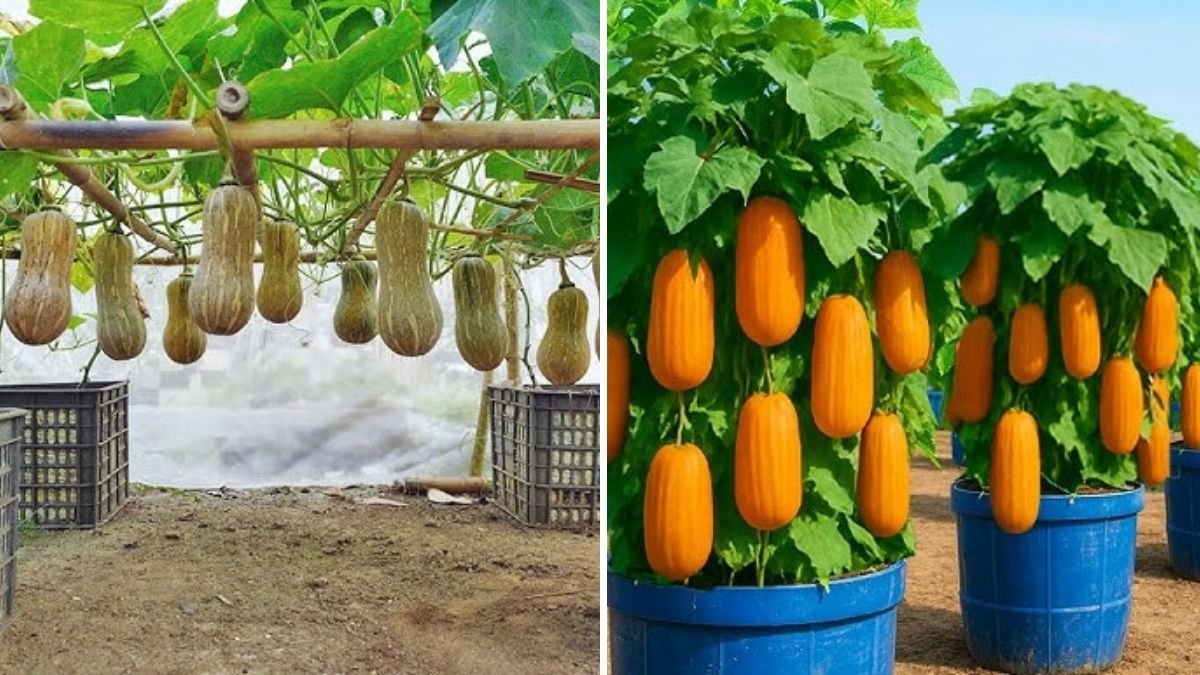
Leave A Comment